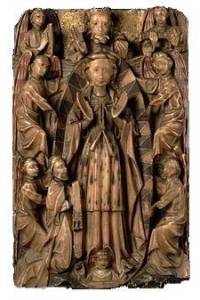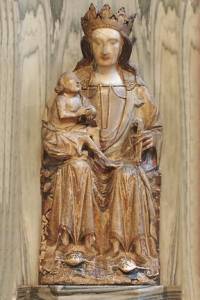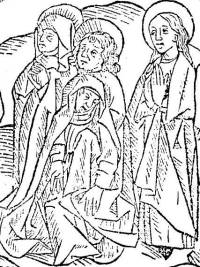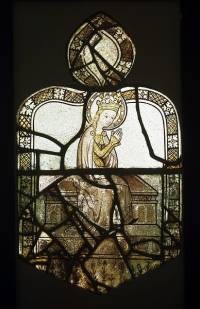Stephen Bates - Images of the Virgin Mary
Late medieval Marian iconography
|
|
(V&A C.295-1911) The curved shape of this glass panel indicates its position at the top of a window. Originally it would have been accompanied by an identically shaped panel picturing the enthroned Christ. This juxtaposition emphasises Mary's glorification and her position as mediatrix alongside her son.
Alabaster panel depicting the Assumption, late fifteenth century (V&A A.32-1910) Although Mary's Assumption did not become dogma until 1950 it was widely accepted by the 6th Century. This panel, probably originating from Nottinghamshire, shows the Virgin standing in an aureola lifted by angels towards God the father. St. Thomas the apostle kneels, holding her girdle.
|
 |
 |
Madonna and Child, alabaster statue, mid-fifteenth century This Nottingham alabaster image came back to England at the time of the French Revolution and is now installed at Westminster Cathedral as Our Lady of Westminster. At the time of the Reformation, the Marian shrine was Our Lady of Pewe in the neighbouring Benedictine abbey.
Lo Spasimo, from the 1483 edition of the Legenda Aurea Sanctorum Mary became increasingly associated with a share in Christ's Passion from the thirteenth century, with the development of the image of Mater Dolorosa and the sequence Stabat Mater. Gradually, she lost her composure and began to faint, as in this woodcut (detail) from William Caxton's print shop. In 1506, Tomasso de Vio reported critically on a proposed Feast of Lo Spasimo. |
 |


 Stained glass depicting the Virgin enthroned, early fifteenth century
Stained glass depicting the Virgin enthroned, early fifteenth century